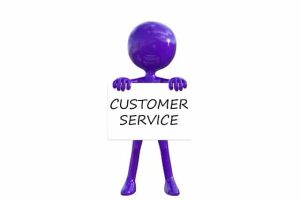Business-to-Business-to-Customer Model, the Merits and Demerits

Business-to-Business-to-Consumer (B2B2C) is a business model that synergizes business-to-business (B2B) and business-to-consumer (B2C) models to make a complete trade or transaction.
It is when a particular business ties up with another company to market a specific group of the customers and it brings about mutual trading service and product delivery gateway.
Unlike in the B2B and B2C models where you do not need another business to run, B2B2C requires facilitation by another firm.
In the B2C model, your company will sell services to clients directly, and in B2B model , a company sells its products and services to other companies.
B2B2C extends the B2B model to include e-commerce for end consumers.
This helps in creating a mutually beneficial relationship between online retailers.
Examples of B2B2C businesses are Pharmaceuticals, e-commerce, and financial services.
Entities in the B2B2C Model
First B in the B2B2C
This is the primary business that gets into the B2B2C arrangement.
This company wants to acquire customers in bulk.
Instead of concentrating on acquiring one customer at a time, this online retailer aims to achieve economies of scale by tapping into the customer base of another business.
In many cases, having an association with the intermediate business (the middle B) in the chain brings in a lot of credibility and trust.
Middle B in B2B2C
The intermediate business might have several possible reasons to be a part of this chain.
On the one hand, it could simply be moneymaking considerations.
For example, as the middleman, the second Business in this deal could be making a commission on sales that are channeled through it.
But often, the middle B does not make any profit in this chain. Some other motivations include providing value to the customers by getting them enhanced priced or more suitable purchase options.
In some cases, for instance, the case of purchase of school uniforms, the middle B tries to ensure that all the customers are purchasing a standardized product.
The C in B2B2C
Being part of a buying group is an unavoidable outcome of being the Customer in a B2B2C chain.
This buying group might be officially defined, and they do get high discount for making a bulk order.
Alternatively, one might choose to go the B2B2C route solely for the accessibility, or the perceived consistency in the buying process.
The Advantages of B2B2C model
The B2B2C model has changed the face of trading to a huge extent. There are several benefits each entity would gain from this partnership.
B2B2C is one of the most effective ways of acquiring customers and gaining information on a customer base within a short period.
Google and Facebook are proper examples of content marketing and social media examples of brands who work on the B2B2C model to grow rapidly.
Online shopping platforms are also good examples of this model of business.
The e-commerce provide the platform for retailers to sell their products to customers while they retain the customers and their data as their own.
The e-commerce enterprises have a massive geographically diversified client base, therefore, it becomes easier for retailers to market their products to physical locations where their marketing network can not reach.
It will also be less time consuming, induces upfront transactions, leverages existing relations and increases the reach of products to a variety of different locations.
However, if you intend to run the B2B2C model, you need to put much focus on the implementation and customer acquisition from the other organization to leverage the advantages.
B2B2C model also helps your company to market its product or service effectively.
For this, it may tie-up with another firm who have expertise in selling online or offline, probably a successful B2C company.
In return, the B2C company can offer the customers more options due to tie up with your company.
Many times, a third party may act as a middleman to transport the goods between the supplier and the e-commerce vendor or even aggregate customers to which the two companies want to reach.
In a B2B2C model of business, the product or service provider may pay the e-commerce company for generating sales leads, conversion of actual sales, information of customers or even building brand recognition and promotion.
In return, the B2C e-commerce company may earn a share of the revenue from selling products and services and customer information of the other company.
B2B2C assists businesses market their products or services lucratively by maintaining a B2B association with another business, whose proficiency lies in promoting the product online.
In return, B2C businesses can provide their clients or customers more choices for trading.
Disadvantages of the B2B2C model
In the B2B2C model, the delivery channel may be different from the purchase decision channel.
For instance, in the financial services, the insurance provider may sell the products to a financial advisor who imparts investment recommendations to his or her clients.
But from a marketing perspective, the impact and interrelationships of marketing of the second company help the end customer decide.
So, the service or product provider may lose out its impact or effectiveness of its marketing strategy.
In other words, the marketing of e-commerce will only have an impact on the purchase decision of the customers.
More so, B2B2C can give rise to issues of integrating the business processes and IT systems of the two companies in terms of back-end systems, databases, ERP and warehouse management.
As the transactions on the e-commerce site might be recorded in the back-end systems of the service or product provider, large investments might be required for capturing any changes and maintaining a central data repository.
This emerging e-commerce business model finely integrates both B2B and B2C traders, bringing the online marketplace to their threshold.
B2B2C has been often one in all the foremost effective ways to get customers and building strong relationship between traders.
For example, Its comparatively easy to acquire customers on Google or Facebook, but B2B2C channels are generally proprietary.
These channels often yield network effects i.e. network improvements based on acquired consumers data that prevents a company’s economy from deteriorating.






